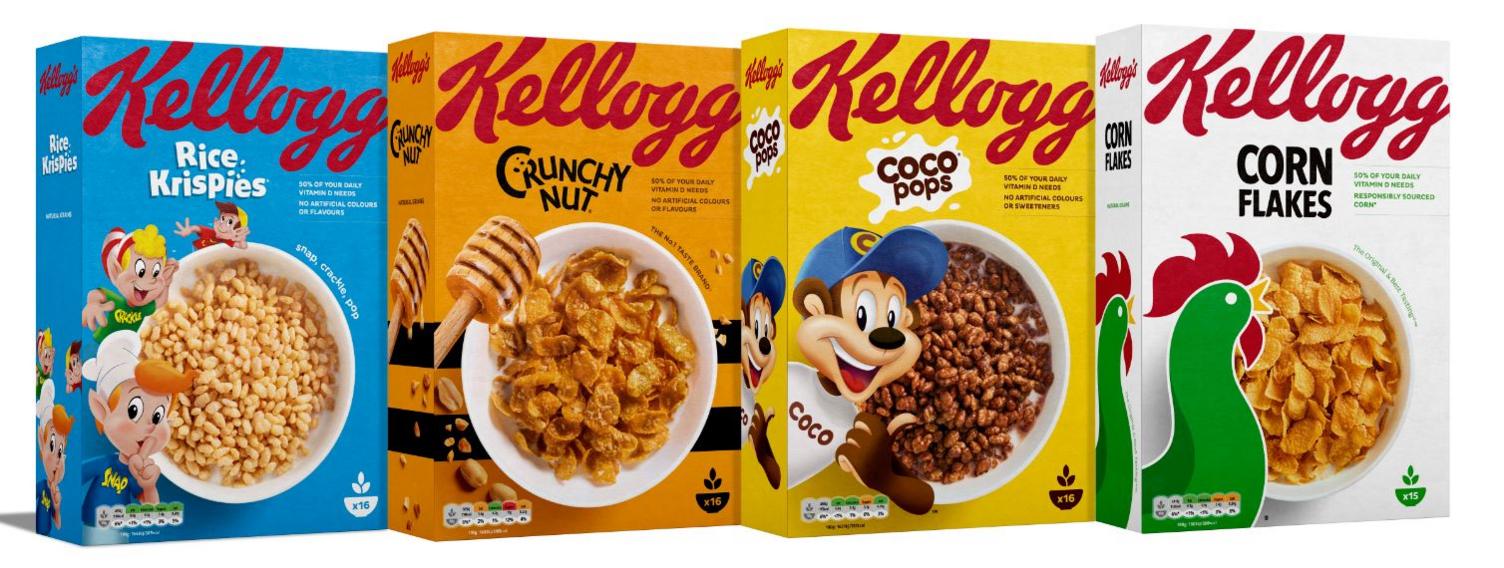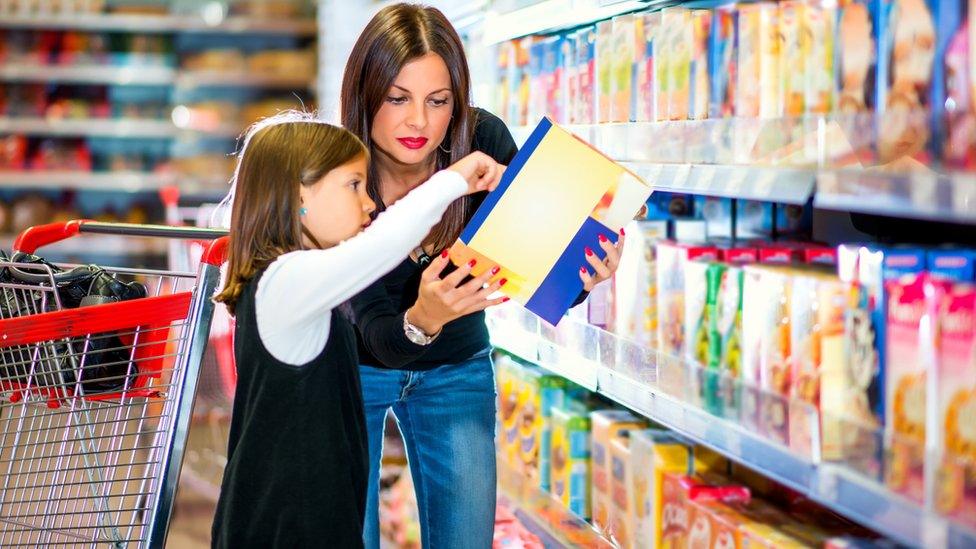Kellogg's gives in on government's 'traffic light' labels
- Published
- comments

Kellogg's is to put "traffic light" labelling on most of its cereal packs sold in the UK from January, having previously refused to do so.
The UK government's voluntary scheme, introduced in 2013, indicates how much salt, sugar or fat foods contain.
Kellogg's said it had made the change after having "listened" to consumers, government and retailers.
Consumer organisation Which? said it was a "positive move" but it should apply to all cereals, not just some.
The traffic light system labels foods green, amber or red, to help consumers easily identify products that have low, medium or high levels of salt, fat and sugar.
Kellogg's new labelling will start to appear on brands including Coco Pops, Crunchy Nut, Corn Flakes, Rice Krispies, Frosties and Special K from January 2019. The rollout will be complete by early 2020.
"We are changing because the people who buy our food told us we should. Following our announcement late last year to overhaul our cereals in the UK, we decided to look again at labelling," Kellogg's said in a statement.
Kellogg's UK managing director Oli Morton said the decision followed a survey of 2,000 Britons asking them about their attitudes towards labelling.
Mr Morton said: "Put simply, they said we should change and move to a full colour solution as they want help making healthy decisions. We've listened and now we're acting."
'Chaos'
However, traffic light labelling will not be used on Kellogg's multilingual boxes shared across several European countries, where the system is not well-known, nor will it appear on single serve packs.
As a result just under 80% of Kellogg's cereal packs sold in the UK and Ireland will carry the new labels.
Until now Kellogg's has stuck to the so-called "Reference Intake" labelling scheme, displayed in monochrome colours on packs. It shows the maximum amount of calories and nutrients people should eat in a day.
Now, though, it said: "Times have changed; changing to colour coded labels is a response to what consumers and government want from us in the UK."
Many supermarkets have voluntarily adopted the traffic light system for their own brands, while rival cereal maker Nestle introduced the "traffic light" scheme on its cereal brands including Shreddies and Cheerios in 2017. Weetabix has used it since 2016.
Earlier this year Which? called on the government to fix the "chaos" of food labelling standards when the UK leaves the EU.
'At a glance'
Under EU rules, traffic light labelling is voluntary, so some manufacturers do not use it.
Which? said it should be mandatory.
Strategic policy adviser Sue Davies said the organisation believed the traffic light nutrition system helped people to compare "at a glance" how much sugar, salt and fat a product contains and was "an effective way of helping them to make healthier food choices".
"While this is a very positive move from Kellogg's, it should apply to all the brand's products sold in the UK and Ireland, not just 80% of them.
"The government should now use Brexit as an opportunity to introduce legislation that makes traffic light labelling mandatory as part of an approach based on high food standards and aimed at boosting the nation's health and well-being," added Ms Davies.
- Published20 June 2018
